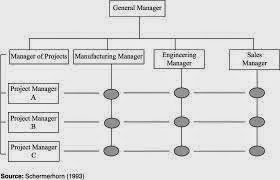KEY TERMS OF MANAGEMENT FROM NON-PROGRAMMED DECISION TO RESPONSIBILITY
1.
Non programmed decision: A decision made as a result of a unique
situation.
2.
Risk: The possibility that a decision may prove to
be the wrong one, as well as the possibility that the potential gain plus
additional resources may be lost as a result
3.
Certainty: The level of confidence the decision-maker
has in the information available to him or her.
4.
Uncertainty: The level of confidence a decision-maker
lacks as a result of incomplete or suspected inaccurate information.
5.
Ambiguity: The goals or problems are unclear, with
uncertain alternatives, and incomplete information.
6. Classical model: A decision-making model that assumes that
managers make decisions in the best interests of their organizations.
7.
Normative: The approach that shows how a manager should
make decisions, with guidelines for reaching solutions in the best interest of
the organization.
8.
Administrative model: A decision-making model in which managers
make decisions in situations involving ambiguity and uncertainty.
9.
Bounded rationality: States that individuals are limited in their
decision-making abilities due to their cognitive capacity to process only a
certain amount of information.
10.
Intuition: An understanding of a decision situation
based unconsciously on past experience.
11. Organizational structure
12. Organizing: Employing resources for the purpose of
attaining organizational goals.
13. Organization life-cycle: An organization’s progress from inception
through decline.
-
Birth stage: The creation of the organization.
-
Youth stage:
Characterized by rapid growth and market success.
-
Midlife stage: Characterized by substantial size and
prosperity.
-
Maturity stage: The decline of the organization due to
inefficiency, excessive size, and an overly mechanistic structure.
14.
Structure: Framework whereby an organization clearly
defines roles, leadership, resource allocation, task division, and departmental
coordination.
15.
Organization
chart: The visual
depiction of an organization’s structure.
16.
Division
of labor: The
subdivision of labor into specialized tasks and individual jobs. Also known as work specialization.
17.
Authority: The legitimate power accorded managers to
make decisions, allocate resources, and otherwise act within his or her
authorized purview.
18.
Chain of command: An unbroken supervisory link that connects
all employees within an organization, from the line worker to the CEO.
19.
Accountability: The requirement for those subject to
authority to justify outcomes to superiors.
20.
Responsibility: The implicit duty of an employee to perform
an assigned task.



Comments